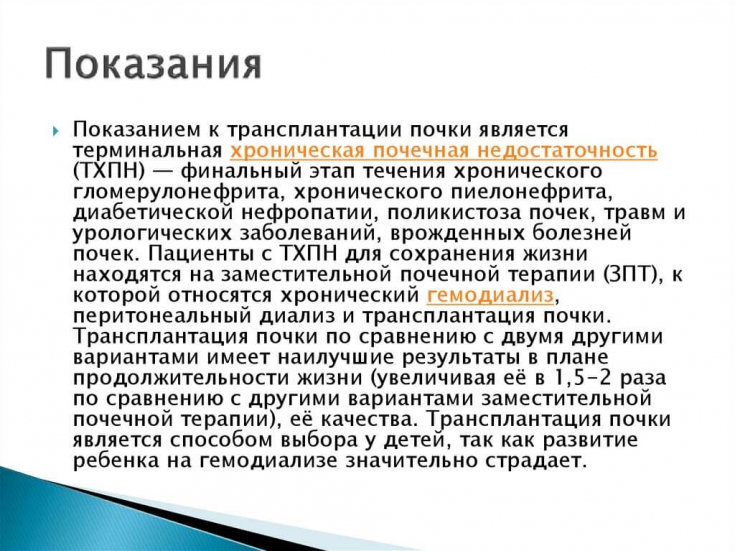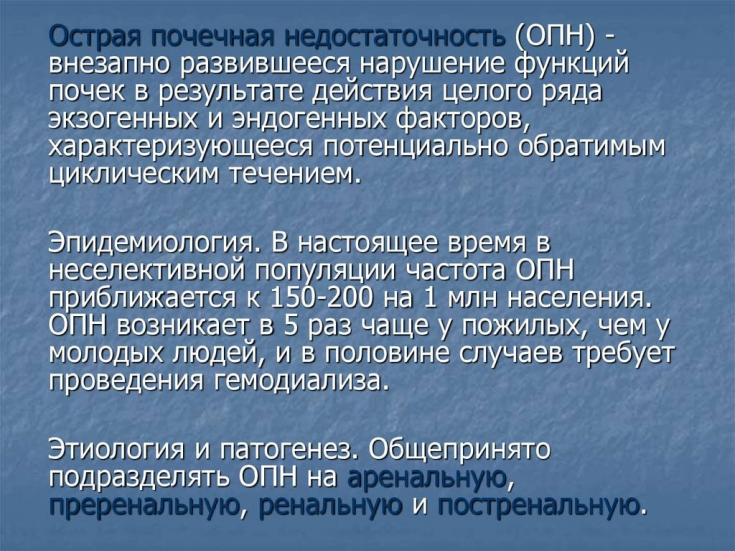The increasing incidence of chronic kidney disease eventually requires transplantation, which has some limitations due to the lack of donors. The age of the donor and usually their dysfunction due to damage by the pathological process significantly affects the decrease in the use of donor kidneys.
Find out in the article on estet-portal.com what international recommendations regarding the approach to choosing a donor and the technique of kidney transplantation can greatly facilitate this process.
- Kidney transplantation: the problem of organ donation and selection
- Clinical studies on donor selection for kidney transplantation
- A new technique for selecting a donor for kidney transplantationek
Kidney transplantation: the problem of organ donation and selection
According to the Korea Network for the Distribution and Exchange of Donor Organs (KONOS), over the past 8 years, about 7.9% of kidneys have been removed from the donor registry.
Follow us on Instagram!
It is expected that this trend may continue in the future, especially among people aged 60 and 70, remaining at the level of 12.0 and 18.1% respectively. The percentage of refusal of organ harvesting from donors older than 60 and 70 years is quite significant, given the continuous process of aging of the population.
In order to reduce the proportion of unsuitable organs from potential donors, many kidney transplant centers have begun to use the technique of simultaneously harvesting both kidneys, based on their own criteria for determining their future function.
Kidney damage in systemic lupus erythematosus: drug therapy
This takes into account the following criteria:
1) Estimated glomerular filtration rate ≤30 ml/min with no signs of deteriorationia;
2) Serum creatinine 3.0 mg/dL without increase during follow-up.
Clinical studies of donor selection for kidney transplantation
Research has been carried out to − report on the experience gained with the simultaneous transplantation of both kidneys taken from donors over 70 years old with signs of acute renal dysfunction.

The results of the study were obtained from patients who received a transplantation of both kidneys from a donor over 70 years of age within a year with one of the two risk factors: serum creatinine level &ge ;3.0 mg/dl or glomerular filtration rate
"Question bluntly": how to understand that a patient has a stone in the ureter
A total of 15 double kidney transplants were performed. The results of treatment were evaluated by comparing them with the data of patients in the kidney transplant group according to standard donor selection criteria.
A new method for choosing a donor for kidney transplantation
Donor selection was based on expanded criteria for distribution and organ transplantation (UNOS): deceased donors were over 60 and 50-59 years of age who had hypertension history of or cerebrovascular accident with confirmed brain death, serum creatinine level before kidney removal > 1.5 mg/dl
For the simultaneous removal of both kidneys for transplantation in persons over the age of 70 years, the following indicators were guided: glomerular filtration rate 3.0 mg / dl.
Kidneys were not removed for transplantation if they were reduced in size compared to normal and creatinine levels had been trending upward over the last 5 days.
Transplantation was performed through a laparotomy incision. The kidneys were implanted on the iliac vessels. Ureteroneocystostomy was performed after revascularization of both kidneys according to the Leach-Gregoire technique.

For the first three days, the recipient, in the presence of signs of elevated levels of donor-specific anti-HLA antibodies, as induction immunosuppression received antithymocyte globulin (rATG at a dosage of 1.5 mg/kg of body weight) . In other cases, induction was performed using an interleukin-2 receptor antagonist (basiliximab 20 mg/kg, two doses on days 0 and 4).
Single application of preparations of monoclonal antibodies against CD20 (rituximab 375 mg/m2, day of transplantation - day 0) was administered to all recipients, who underwent simultaneous transplantation of both kidneys with an increase in the level of donor-specific anti-HLA antibodies. tacrolimus, mycophenolate sodium and steroids.
were used as maintenance immunosuppressive therapyTreatment of chronic cystitis: main directions and types of therapy
As noted by the researchers in the results of their work, the graft survival rate with simultaneous kidney transplantation was comparable to the result of a single kidney transplant, both in terms of the duration of functioning and the quality of the clinical results obtained, and gives right wide introduction of this method into medical practice.
This technique can significantly reduce the shortage of donor kidneys, and the results provide quite important conclusions of the study.
The most up-to-date information on our YouTube channel:







Add a comment